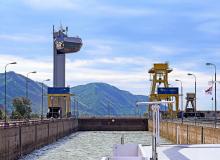How To Develop Sustainable Irrigation Projects with Private Sector Participation
As the impact of climate change on food production for both developed and emerging economies shapes a new set of demands worldwide, there is a need to look at how water resources and irrigation can be optimized to meet the requirements of coming generations. This handbook explores one possible route: the use of public private partnerships (PPPs). PPPs have the potential to facilitate an expanded role for the private sector in irrigation, mobilize expertise in the sector, and ensure medium- to long- term sustainability.





